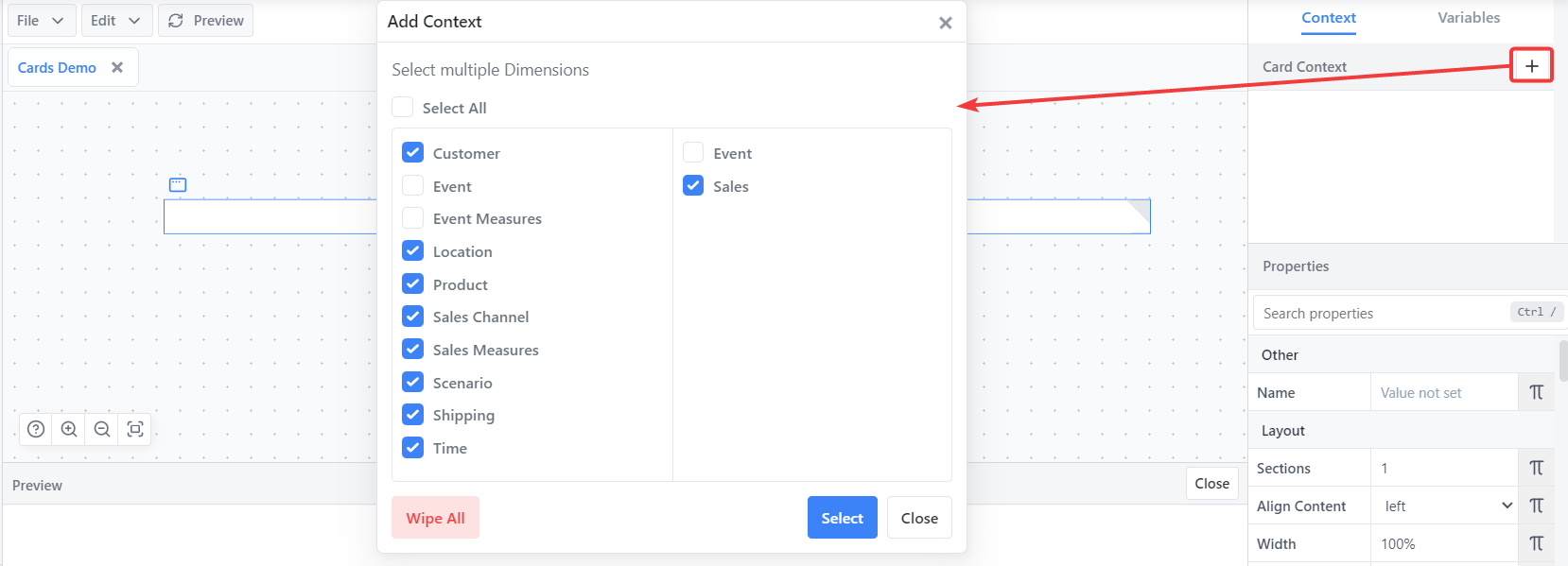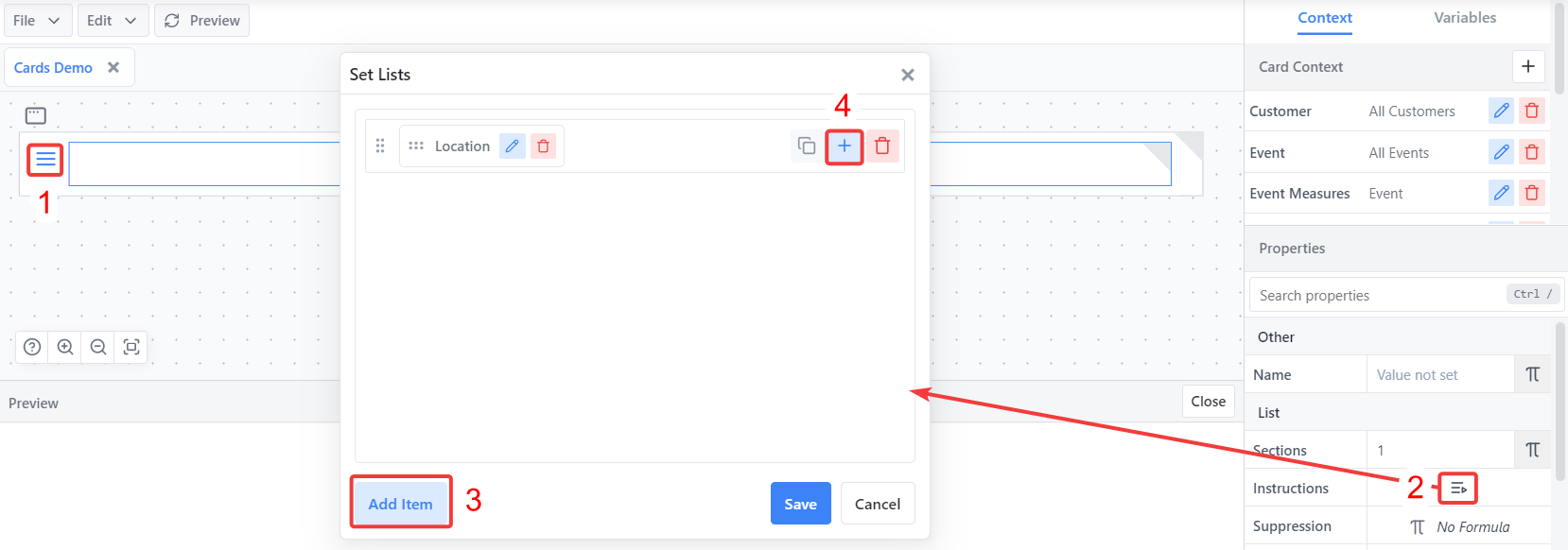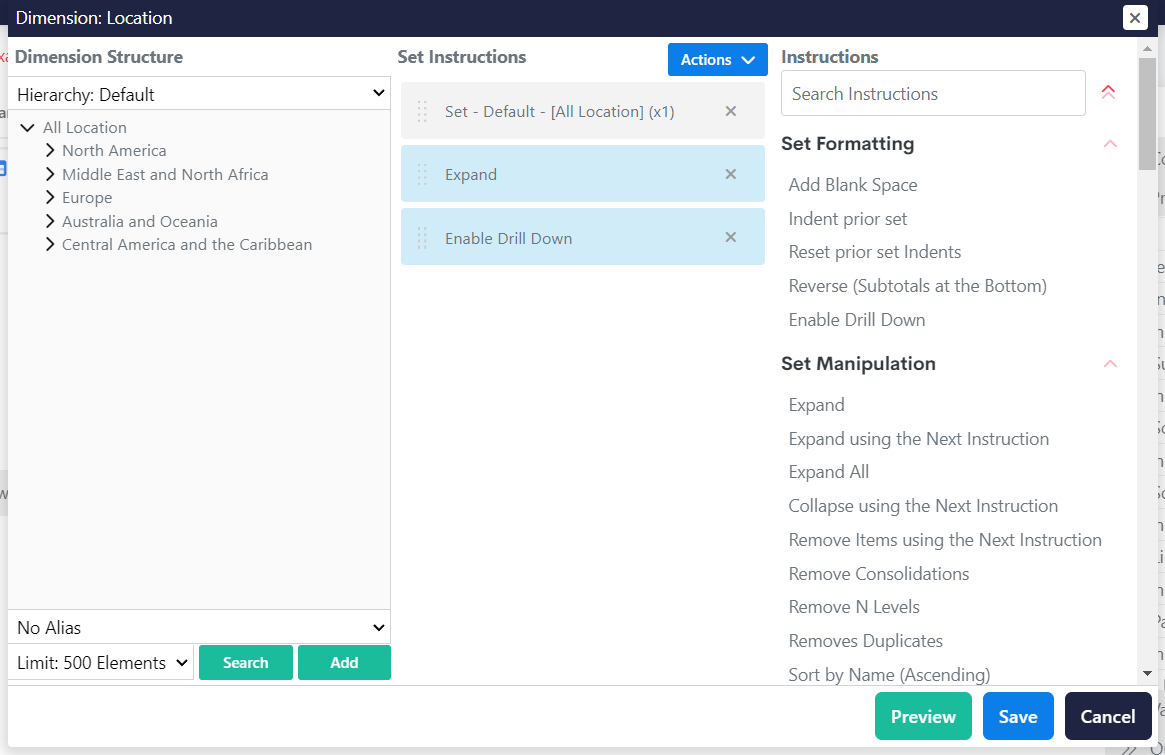Adding a List
Open the card where the table is desired to be placed. In a new card, it is recommended to include context when the card is going to display data from a cube. Do so by Clicking the blue plus symbol in the top right of the Context Panel and selecting dimensions or cubes that may be referenced in the card, and clicking the blue "Select" button to confirm.

TIP
This is done so that the card can fall back on default context when required. (E.x. if a cube is being referred to but not all dimensions have specified elements, the context will be used for the unspecified elements.)
Under the "Layout" section, click and drag the "List" component into the card editor panel.

Click on the list component icon in the card editor panel to show the list properties in the Properties panel.
The essential property to be filled in for a list to function is the Instructions property under the List section. This property defines the data the list is set up to display. Click on the set editor icon to open the set editor panel for Instructions.
Click on the "Add Item" button on the bottom left to add a row for instructions. Click on the blue plus button in the first row to add a dimension. Choose from the dropdown, and click "Select" to confirm the selection.

Click on the pencil icon next to the dimension name to add dimension instructions. The elements selected here will define what the list loops over (there will be a new row or column on the list per element), depending on the setting of the List Type property.

TIP
Choose elements from the left panel of the Popup. They can be added to set instructions by double-clicking on individual elements, or right clicking on an element for a dropdown menu of more methods to quickly add elements.
Once done, save the instructions using the blue "Save" button and save the Instructions property by clicking the blue "Save" button again on the set editor popup.
Once the instructions property has been filled out, we need to add content to the list. Text components can be dragged into the list cells and edited via their properties, but there is a simpler method with tables. Simply right click inside the list component and and select "Insert Element Text" or "Insert Data Text".
Insert Element Text The dimension selected in the dropdown should typically be the one that was used in the Row Instructions. In this example, the "Location" dimension. This automatically puts the formula of
ELEMENT("Location")into the Text property of the Text component. With this in place, the text element will automatically retrieve the name of each "Location" element put in the instructions and use each of them as list items.Insert Data Text In the popup that appears, select the cube which references the data locations that are desired to be displayed in the table.
Click select to confirm the selection. Click the "Preview" button above the card editor to see the list items appear in the card preview.
For more information on list components see the List Component Documentation.